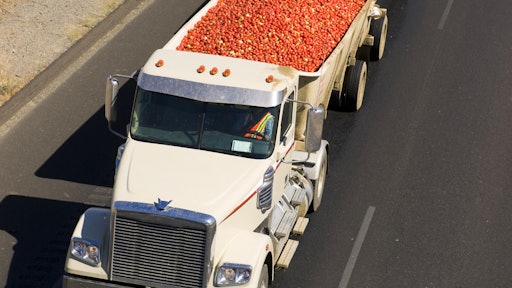
With fresh produce sales increasing and the dual challenges of limited carrier capacity and new regulations on the horizon, the produce industry isn’t sitting still. The majority of growers, shippers and carriers say they are confident in the industry’s ability to manage expanding produce capacity, according to an article in the May Food Logistics. A coalition of industry trade groups called the North American Produce Transportation Working Group (NAPTWG) has put in place some best practices to make sure all parties can continue to work together effectively.
Demand for produce packaging in the United States is forecast to increase 3.2 percent annually to $6 billion in 2019, according to the Cleveland, Ohio-based Freedonia Group, a research company.
While shippers and carriers recognize produce as one of the most sensitive product segments due to the temperature requirements and limited shelf life, the transportation of fresh produce has not been strictly regulated for safety by federal agencies. This is expected to change under the Food Safety Modernization Act (FSMA). The FSMA specifies the growing, harvesting, packing and holding of produce on farms.
In the meantime, the produce transportation industry has taken several steps to strengthen its safety practices.
In an effort to provide guidance to growers, shippers, carriers and brokers, more than 25 national and regional produce industry groups formed the NAPTWG, representing produce transportation stakeholders from associations and industry groups across North America. The NAPTWG provides guidance for seamless product movement and to ensure that the produce industry continues to have sufficient access to carriers to meet the needs of the North American produce industry.
To read more, click here.






























